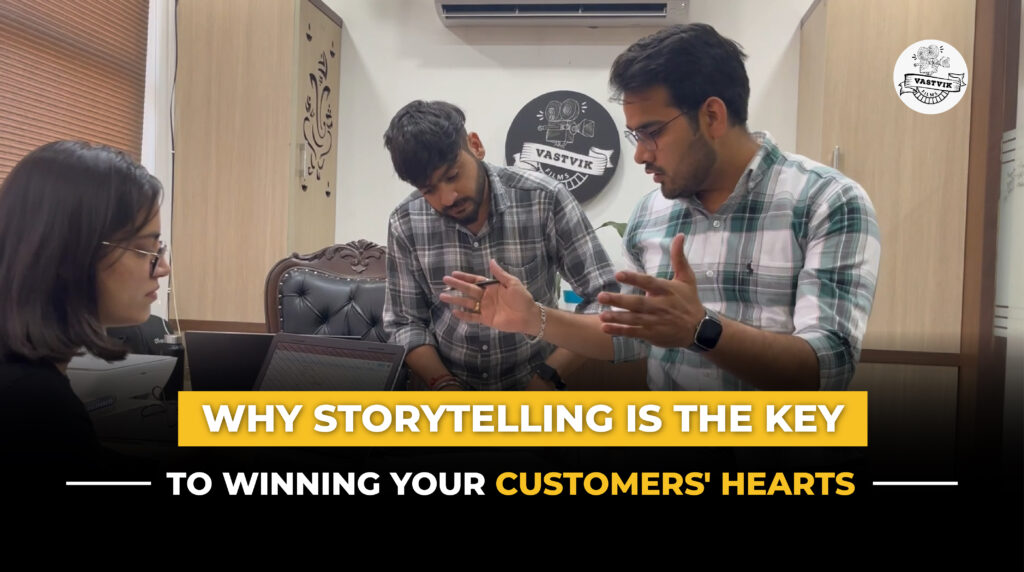
Why Storytelling is the Key to Winning Your Customers’ Hearts
Here’s a little secret: humans don’t just want information—they want stories. And that includes your customers. Imagine trying to tell a friend about your favorite movie by listing out the actors, scenes, and settings—boring, right? Now imagine sharing how that movie made you feel, the twists that shocked you, or the ending that left you speechless. Suddenly, you’ve got their full attention.
It’s the same with brands. Throw all the stats, features, and benefits at your audience, and they’ll politely tune out. But tell them a story? Show them how your brand fits into their life, solves their problem, or sparks their imagination. Now you’re onto something.
In a world saturated with brands vying for attention, video storytelling can be the game-changer. Let’s explore how telling your brand’s story through video can completely shift how your customers think, feel, and—most importantly—act toward your business.
Why Storytelling Works So Well in Videos
Humans are hardwired for stories. For thousands of years, we’ve used them to make sense of the world, to connect, and to communicate. Video, with its dynamic combination of visuals, sound, and emotions, is the perfect medium for storytelling. Here’s why it’s a game-changer for your brand:
- Emotion Trumps Information People might forget the features of your product, but they’ll always remember how you made them feel. Videos allow you to communicate emotions—joy, surprise, empathy—that stick with your audience far longer than any bullet point list of features ever could. With storytelling, you’re not just saying, “Here’s what we do,” you’re saying, “Here’s why it matters.”
- Show, Don’t Tell One of the golden rules of storytelling is to show, not tell. Video allows you to demonstrate the value of your brand in action. Instead of telling people, “We care about the environment,” you can show them how your brand actively contributes to sustainability. You can make an impact without ever having to say a word.
- Memorability through Narrative Think about the last great ad you saw. Chances are, it wasn’t a dry, fact-filled presentation. It was a story that held your attention, maybe made you laugh, or even tugged at your heartstrings. That’s because our brains are naturally wired to remember stories more than standalone facts. When you use video storytelling, your brand becomes more memorable and, by extension, more relevant.
How to Tell Your Brand’s Story Through Video
Now that we know why storytelling is so effective, how do you actually go about telling your brand’s story through video? Let’s break it down.
1. Know Your Audience
Before you even think about hitting the record button, get clear on who you’re talking to. What are their pain points? What emotions do you want to evoke? Craft your story around your audience’s needs, and they’ll be far more likely to engage with your message.
2. Create a Relatable Hero
Every good story needs a hero, and in your brand’s story, that hero could be your customer or even your product. But here’s the catch: the hero has to be relatable. If your audience can see themselves in your story, they’ll feel more connected to your brand.
For example, if you’re a video production company in Mumbai, showcase how your services help everyday businesses tell their stories. Let your audience be the star, and your brand the guide that helps them succeed.
3. Show the Conflict and the Resolution
Good stories have conflict. They have problems that need to be solved. In your brand’s story, this might be a challenge that your customers face. Your product or service should be the resolution—the solution that helps the hero overcome the challenge. When your audience sees how you can help solve their problem, they’ll be more likely to trust and choose your brand.
4. Evoke Emotion, But Stay Authentic
People can spot inauthenticity from a mile away. Your storytelling needs to be genuine, not a forced attempt to manipulate emotions. Find the heart of your brand’s story and let that shine through. Authenticity breeds trust, and trust builds brand loyalty.
5. Wrap It Up with a Strong Call to Action
Once your story has captivated your audience, don’t leave them hanging. Guide them to the next step with a clear call to action. Whether it’s “Learn more,” “Get started,” or “Watch now,” make sure your CTA feels like a natural continuation of the story you’ve just told.
Real-World Examples of Brand Storytelling through Video
Many big brands have mastered the art of storytelling through video, and their success proves just how powerful it can be.
- Nike’s “Dream Crazy” Campaign: Featuring Colin Kaepernick, Nike didn’t just showcase their products—they told a story of perseverance, passion, and standing up for what you believe in. This resonated with their audience on a deeply emotional level, building a stronger brand connection.
- Coca-Cola’s “Share a Coke” Campaign: Coca-Cola didn’t focus on the product itself, but on the emotions tied to sharing a moment with someone. By putting names on their bottles, they told a personal story that encouraged customers to create their own.
Final Thoughts: Your Story is Waiting to Be Told
In a world where people are bombarded with thousands of messages a day, your brand needs to stand out. Storytelling through video isn’t just a marketing tactic—it’s a way to humanize your brand, build trust, and create lasting connections with your customers.
So, what’s your story? Whether you’re an emerging business or an established brand, now’s the time to harness the power of video storytelling and change how your customers think about you—for the better.

